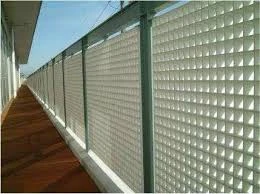
-
 Afrikaans
Afrikaans -
 Albanian
Albanian -
 Amharic
Amharic -
 Arabic
Arabic -
 Armenian
Armenian -
 Azerbaijani
Azerbaijani -
 Basque
Basque -
 Belarusian
Belarusian -
 Bengali
Bengali -
 Bosnian
Bosnian -
 Bulgarian
Bulgarian -
 Catalan
Catalan -
 Cebuano
Cebuano -
 China
China -
 China (Taiwan)
China (Taiwan) -
 Corsican
Corsican -
 Croatian
Croatian -
 Czech
Czech -
 Danish
Danish -
 Dutch
Dutch -
 English
English -
 Esperanto
Esperanto -
 Estonian
Estonian -
 Finnish
Finnish -
 French
French -
 Frisian
Frisian -
 Galician
Galician -
 Georgian
Georgian -
 German
German -
 Greek
Greek -
 Gujarati
Gujarati -
 Haitian Creole
Haitian Creole -
 hausa
hausa -
 hawaiian
hawaiian -
 Hebrew
Hebrew -
 Hindi
Hindi -
 Miao
Miao -
 Hungarian
Hungarian -
 Icelandic
Icelandic -
 igbo
igbo -
 Indonesian
Indonesian -
 irish
irish -
 Italian
Italian -
 Japanese
Japanese -
 Javanese
Javanese -
 Kannada
Kannada -
 kazakh
kazakh -
 Khmer
Khmer -
 Rwandese
Rwandese -
 Korean
Korean -
 Kurdish
Kurdish -
 Kyrgyz
Kyrgyz -
 Lao
Lao -
 Latin
Latin -
 Latvian
Latvian -
 Lithuanian
Lithuanian -
 Luxembourgish
Luxembourgish -
 Macedonian
Macedonian -
 Malgashi
Malgashi -
 Malay
Malay -
 Malayalam
Malayalam -
 Maltese
Maltese -
 Maori
Maori -
 Marathi
Marathi -
 Mongolian
Mongolian -
 Myanmar
Myanmar -
 Nepali
Nepali -
 Norwegian
Norwegian -
 Norwegian
Norwegian -
 Occitan
Occitan -
 Pashto
Pashto -
 Persian
Persian -
 Polish
Polish -
 Portuguese
Portuguese -
 Punjabi
Punjabi -
 Romanian
Romanian -
 Russian
Russian -
 Samoan
Samoan -
 Scottish Gaelic
Scottish Gaelic -
 Serbian
Serbian -
 Sesotho
Sesotho -
 Shona
Shona -
 Sindhi
Sindhi -
 Sinhala
Sinhala -
 Slovak
Slovak -
 Slovenian
Slovenian -
 Somali
Somali -
 Spanish
Spanish -
 Sundanese
Sundanese -
 Swahili
Swahili -
 Swedish
Swedish -
 Tagalog
Tagalog -
 Tajik
Tajik -
 Tamil
Tamil -
 Tatar
Tatar -
 Telugu
Telugu -
 Thai
Thai -
 Turkish
Turkish -
 Turkmen
Turkmen -
 Ukrainian
Ukrainian -
 Urdu
Urdu -
 Uighur
Uighur -
 Uzbek
Uzbek -
 Vietnamese
Vietnamese -
 Welsh
Welsh -
 Bantu
Bantu -
 Yiddish
Yiddish -
 Yoruba
Yoruba -
 Zulu
Zulu
GRP Chemical Products - High-Performance Solutions for Diverse Industries
Understanding GRP Chemical Products Applications and Benefits
Glass Reinforced Plastic (GRP) is an advanced composite material made from a polymer matrix reinforced with glass fibers. This combination results in a lightweight, strong, and highly versatile product widely used in various industries. The remarkable properties of GRP have propelled its adoption across sectors, ranging from construction to aerospace, marine to automotive, and even in consumer goods.
Properties of GRP
One of the standout characteristics of GRP is its exceptional strength-to-weight ratio. This makes it ideal for applications where minimizing weight is crucial, yet structural integrity must be maintained. In addition, GRP exhibits excellent corrosion resistance, making it a preferred choice for applications in harsh environments or where exposure to chemicals is common. The material is also non-conductive, providing benefits in electrical insulation and reducing risks associated with metal production.
These unique properties stem from the interplay between the glass fibers and the polymer matrix. The glass fibers provide tensile strength, while the resin matrix binds the fibers together and allows for customizability in terms of finish and appearance. This flexibility also means that GRP can be molded into complex shapes, offering design versatility for innovative applications.
Applications of GRP
grp chemical product

The usage of GRP spans across multiple industries. In construction, GRP is frequently used for roofing, wall panels, and pipes. Its lightweight nature simplifies transportation and installation, leading to reduced labor costs. In the automotive industry, GRP is employed in the production of body parts and components, contributing to improved fuel efficiency due to the reduction in overall vehicle weight.
The aerospace sector also leverages GRP for its high strength-to-weight ratio and durability. Components like fairings, panels, and interior parts benefit from the material's ability to withstand the rigors of flight without compromising structural integrity. Similarly, in marine applications, GRP is essential for boat hulls and other components that require both buoyancy and resilience against water and salt environments.
Benefits of Using GRP Chemical Products
The formulation of GRP chemical products brings several benefits. Firstly, their durability leads to a longer lifecycle, reducing the frequency of replacements and thereby saving costs in the long run. Secondly, GRP’s lightweight characteristics pave the way for energy savings during transportation and installation, aligning with modern sustainability goals.
Moreover, GRP can be engineered to exhibit various aesthetic properties, making it a popular choice in consumer goods where appearance is essential. From decorative pieces to functional items, GRP allows for an innovative approach to design without sacrificing performance.
In conclusion, the GRP chemical product represents a significant advancement in materials science. Its multifaceted benefits and wide-ranging applications make it a cornerstone in modern industry. As technology continues to evolve, the potential for GRP is bound to expand, paving the way for even more innovative solutions in engineering and design. Understanding and utilizing GRP effectively can lead to enhanced performance, sustainability, and cost efficiency across various sectors.









